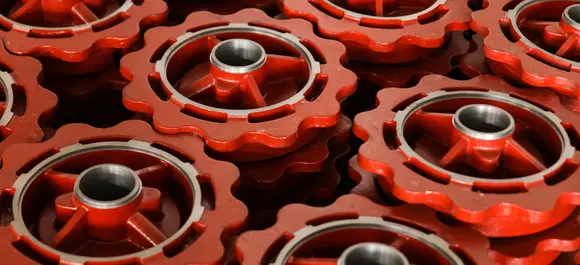Mobile:+86-311-808-126-83
Email:info@ydcastings.com
Pressure Die Casting of Aluminium - High-Quality Aluminum Components
Pressure Die Casting of Aluminium
Pressure die casting is a highly efficient manufacturing process used to produce complex and precise aluminium components
. This technique is characterized by its ability to create parts with excellent surface finishes and tight tolerances, making it a preferred method across various industries, including automotive, aerospace, and electronics.The process of pressure die casting begins with the heating of aluminium until it reaches a molten state. Once the aluminium is in liquid form, it is injected into a steel mold under high pressure. This pressure can reach up to 1,500 bar, ensuring that the molten metal fills the mold quickly and uniformly. The high pressure not only facilitates the filling of intricate mold designs but also minimizes the likelihood of defects such as porosity and air entrapment, which can compromise the integrity of the final product.
One of the primary advantages of pressure die casting is its efficiency. The cycle time for the process is relatively short compared to other casting methods, allowing for high-volume production. After the aluminium cools and solidifies within the mold, the part can be ejected quickly, enabling manufacturers to meet the demands of mass production without sacrificing quality. Furthermore, because the process is automated, it reduces labor costs and increases consistency in production.
pressure die casting of aluminium

Aluminium is an ideal material for pressure die casting due to its favorable properties. It is lightweight, has excellent corrosion resistance, and possesses good thermal and electrical conductivity. These attributes make aluminium castings increasingly popular, particularly in industries where weight reduction is critical, such as automotive manufacturing. The use of aluminium in part design can lead to significant fuel savings and improved performance of vehicles.
In addition to its mechanical benefits, pressure die casting of aluminium also allows for considerable design flexibility. Engineers can create parts with complex geometries that would be difficult or impossible to achieve with traditional machining techniques. This capability facilitates innovative product designs, meeting the ever-evolving demands of consumers and industries.
However, it is important to note that the pressure die casting process is not without its challenges. The initial setup costs for molds can be high, which may deter small-scale manufacturers. Additionally, the choice of alloy and the design of the mold must be carefully considered to optimize the process and ensure the quality of the final product. Regular maintenance of molds is also essential to prevent wear and tear, which can affect production.
In conclusion, pressure die casting of aluminium stands out as a potent manufacturing process that combines efficiency, quality, and design flexibility. Its ability to produce intricate components quickly and cost-effectively has cemented its role as a cornerstone in metalworking industries. As technology advances and materials science evolves, the future of pressure die casting appears promising, with continued innovations poised to enhance its applications even further.
-
Why Should You Invest in Superior Pump Castings for Your Equipment?NewsJun.09,2025
-
Unlock Performance Potential with Stainless Impellers and Aluminum End CapsNewsJun.09,2025
-
Revolutionize Your Machinery with Superior Cast Iron and Aluminum ComponentsNewsJun.09,2025
-
Revolutionize Fluid Dynamics with Premium Pump ComponentsNewsJun.09,2025
-
Optimizing Industrial Systems with Essential Valve ComponentsNewsJun.09,2025
-
Elevate Grid Efficiency with High-Precision Power CastingsNewsJun.09,2025











